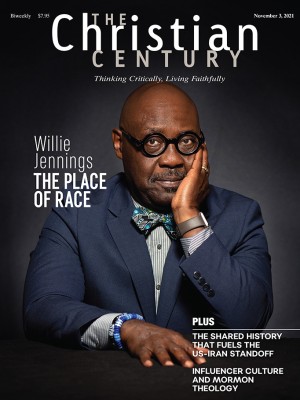November 14, Ordinary 33B (1 Samuel 1:4–20)
What if we put children at the center of our policies and decisions?
Reflecting on this text and on Hannah’s story, I remember listening to New Testament scholar Amy Lindeman Allen explain what she called a “children’s reading of the text.” She said that children are very rarely the center of biblical text and interpretation. Instead, they are usually just an appendage or afterthought, when they’re mentioned at all. She made the rather audacious claim that in the US context, when we list different marginalized people and groups, we should include children. Children are often left without voices, and, particularly relevant for us, they are seldom considered in sermons, theology, homiletics, lectures, papers, articles, lectionaries, and workshops. What about the children?
What about the children in this post-truth era? Fake news, alternative facts, and conspiratorial views of reality present a daily challenge for adults and our sanity. How much more so for children? How should they know what to believe? What about the children? What about the displays of violence, hate, intolerance, and bigotry that we adults mimic before them? What are the ramifications of adults acting badly and viciously in front of children?
Read our latest issue or browse back issues.
What about the children in a time when anti-immigrant sentiment is on the rise across the globe, from the United States to Italy, to Austria, to Germany, and to more places in the world than I can name? In preparing this reflection, I looked at several lists of the chief challenges facing children worldwide: poverty, life as refugees, violence through indoctrination, lack of access to education, child neglect, child labor, child abuse, rape and molestation, child prostitution, child trafficking and slavery, military use of children, hunger, and climate change, to name a few. What about the children? What if we got busy and active for the children? What do our reflections on this text of 1 Samuel have to do with children?
Hannah has a word for our commitment to children. Let’s look at an interpretation of the text that puts children at the center.
Hannah is completely stressed out—she weeps bitterly and will not eat. The text says that one day, “Hannah rose.” She goes to the temple and weeps in the bitterness of her soul, saying, God, if only you will give me a son, then I will give him back to you, to serve you all the days of his life. Her lips are moving, but she is not making a sound—she is groaning to God quietly, from the depth of her soul.
Eli, the priest, answers her and says, “Go in peace, and may the God of Israel grant what you have asked.” After hearing this, she goes on her way and her face is no longer downcast. The next morning she and her husband go to worship and then back home, where they have sex together—and Hannah conceives. She gives birth to a son, Samuel. I asked the Lord for him, she says. And, having borne this child she considers sacred, Hannah gives him back to God as she promised.
What if we had a sacred view of children, rather than seeing them as mere appendages to the perspectives of adults?
Do we regard children as sacred in our US context and culture? Do we regard children outside of our group, ethnicity, or race as sacred? Are immigrant children sacred? What if children were the center of the world instead of adults? What if children were the center of textual interpretation? What if children were the center of our policies and decisions, the behaviors and attitudes of this nation?
In a time of pandemic, when effective vaccines are available to adults but not yet to young children, elected officials often seem more concerned about keeping bars and restaurants open than safely opening schools, which hold the future of 50 million children in the balance. What about the children? By early this August, only 29 states had recommended that students wear masks to make in-person school as safe as possible. Are children being held sacred when we allow political posturing to take precedence over public health?
An August 21 New York Times editorial argues that “the learning catastrophe that has befallen the country’s most vulnerable children” because of the pandemic will have negative ripple effects for decades to come. How will we prioritize the children who struggled with learning during the pandemic, many of whom were already the most at risk, in the most vulnerable communities? How will we ensure that we bring all of our children back to their appropriate grade level?
I applaud President Biden’s efforts to reduce child poverty by half as part of the American Families Plan. We need more determination and more action by others as well. What about the adults who refuse to prioritize children enough to effect change across our nation and world? Do we adults know how sacred children really are?





